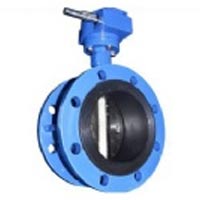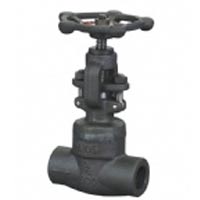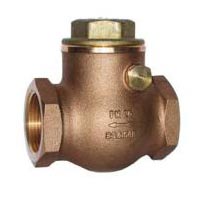(1) Classification of control valves
The adjustment mechanism of the control valve is a device that converts the change in the output displacement of the actuator into a change in the flow area between the valve core and the valve seat of the control valve. Usually, the regulating mechanism is called a valve. According to the nominal diameter, it can be divided into small diameter (DN<40mm), medium diameter and large diameter (DN>350mm); according to the nominal pressure, it can be divided into vacuum (50mm< DN <300mm) (PN<atmospheric pressure), low pressure (PN<1.6MPa), medium pressure (2.5MPa<PN<6.4MPa), high pressure (10.0MP a<PN<80.0MPa) and ultra high pressure (PN>80.0MPa), etc. According to the fluid working temperature, it can be divided into ultra-low temperature (t<-100℃), low temperature (-100℃ <t<-29℃), normal temperature (-29℃<t<120℃), medium temperature (120℃ <t< 450 ℃) and high temperature (t>450℃); according to the connection with the pipeline, it can be divided into flange connection, threaded connection, welded connection, clamp connection and ferrule connection, etc.; according to the mesh material, it can be divided into non-metallic Material valve, metal material valve and metal valve body lining valve, etc.; according to the application object, it can be divided into flow, pressure, temperature, liquid level, etc.
(2) The function and characteristics of the regulating valve
1. From the structure. The adjustment mechanism is composed of a national body, a valve trim, an upper valve cover, and a lower valve cover. The valve body is the device through which the controlled fluid flows. It is used to connect the bamboo path and realize the fluid passage. The well provides the support of the valve seat and other wide internal parts. Because the internal parts are components that directly contact the controlled medium in the room, including the valve core, the seat, the mesh rod, the guide sleeve, the sleeve, the sealing ring, etc., the upper valve passage component is usually composed of the upper reading cover, the packing cavity, It is composed of packing, upper cover plate and connecting bolts. In some adjustment mechanisms, the lower valve cover is a part of the reading body and is not separated. The lower valve is used for the adjustment mechanism with bottom guide, which includes the lower valve cover, guide sleeve and discharge screw. In order to facilitate installation and maintenance, the upper valve cover of some adjustment mechanisms is integrated with the valve body, while the lower valve cover is separated from the valve body, which is called a valve body separation valve. For example, some high-pressure valves and valve body separation valves.
2. From the perspective of the valve body structure, it can be divided into a single seat valve body with a valve seat and a valve core, a double mesh seat valve body with two valve seats and a valve core, a connecting port and a connecting outlet Two-way valve body, a three-way valve body with three connection ports (division of one inlet and two outlets or confluence of two inlets and one outlet).
3. From the perspective of spool displacement, the adjustment mechanism is divided into linear displacement valve and angular displacement valve. They are used in conjunction with linear displacement actuators and angular displacement actuators respectively. Straight-way valves, angle valves, sleeve valves, etc. are linear displacement valves, also known as sliding stem valves. Butterfly valves, eccentric rotary valves, ball valves, etc. are angular displacement valves, also known as rotary valves (Rotary Valve) . In recent years, some manufacturers have also introduced a control valve with a movable valve seat, which cooperates with a quarter-turn actuator, but from the relative displacement of the valve core, it is still a linear displacement. For example, Nufflo control valve.
4. From the perspective of the valve core guide, it can be divided into top guide, top bottom guide, sleeve guide, valve stem guide and valve seat guide. For fluid control and closure, the valve core guide is very important, and the valve core guide is used to align the valve core and the valve seat. The top guide adopts the bonnet or a guide sleeve or packing structure in the valve body to realize the guide; the top and bottom guide adopts the guide sleeve of the bonnet and the lower bonnet to realize the guide, and the top and bottom guide is required for the double seat valve and the adjustment mechanism that requires precise guidance. ; Sleeve guide adopts the outer surface of the valve core and the inner surface of the sleeve to guide. This guide method has self-centering performance and can accurately realize the centering of the valve core and valve seat; the valve stem guide adopts the upper valve cover The guide sleeve and the valve seat ring are centered, and the shaft sleeve and the valve stem are used for guidance; the valve seat guide is used in the small flow control valve, and it uses the valve seat to directly center.
5. From the perspective of the unbalanced force on the spool, the spool of the regulating mechanism has two types: unbalanced and balanced. A balanced spool is a spool with a balance hole on the spool. When the spool moves, the upper and lower parts of the spool are connected by a balance hole. Therefore, most of the pressure difference on both sides is offset, which greatly reduces The effect of unbalanced force on the valve core. The balanced spool needs a balanced chamber, therefore, it needs to be sealed by a sealing device. Depending on the flow direction, the pressure on the balance spool can be the pressure in front of the valve (flowing from the center to the outside) or the pressure after the valve (flowing from the outside to the center). The balanced valve core can be used for the valve core of the sleeve structure and the valve core of the plunger structure. The two sides of the unbalanced spool are the pressures before and after the control valve. Therefore, the unbalanced force on the spool is large, and the control valve of the same caliber requires a larger thrust actuator to operate.
6. From the perspective of spool pressure reduction, the spool structure has single-stage pressure reduction and multi-stage pressure reduction. Due to the large pressure difference between the two ends of the single-stage pressure reduction structure, it is suitable for occasions with low noise and low cavitation. In situations with high noise reduction requirements and severe cavitation, a multi-stage pressure reduction structure should be adopted. In the multi-stage pressure reduction structure, the pressure difference between the two ends of the control valve is broken down into several smaller pressure differences, so that the pressure difference in each stage is small, and cavitation and flashing will not occur, thereby preventing cavitation And the flash evaporates, also greatly reduces the noise.
7. From the perspective of flow characteristics, it can be divided into linear characteristics, equal percentage characteristics, quick opening characteristics, parabolic characteristics, hyperbolic characteristics, and some correction characteristics according to different changes in the flow area. Flow characteristics indicate the relationship between valve stem displacement and fluid flow. Usually, the flow characteristics are used to compensate the nonlinear characteristics of the controlled object. The shape of the spool or the shape of the sleeve opening determines the flow characteristics of the control valve. The straight stroke valve core can be divided into flat type (for quick opening), plunger type, window type and sleeve type. Due to the different changes in the opening area, the flow area is also different when the spool moves, so as to achieve the required flow characteristics. Plunger valve and window valve can also have different shapes according to the required flow characteristics. The spools of quarter-turn valves also have different shapes, such as traditional valve plates and dynamic contour valve plates for butterfly valves; O-shaped openings, V-shaped openings, and modified openings for ball valves.
8. From the perspective of the interchangeability of valve trims, the trims of some adjustment mechanisms can be easily replaced and maintained. For example, the sleeve valve can be easily replaced to achieve different flow characteristics; the top and bottom oriented valve trim can be easily replaced and maintained. Conveniently flip the valve core and valve seat to realize the replacement of the positive valve and the reverse valve, thereby realizing the replacement of air opening and air closing; the valve body separation valve can be easily disassembled for valve seat replacement and cleaning.
9. From the perspective of the upper bonnet structure, according to different application requirements, ordinary bonnets, long-neck bonnets, long-neck bonnets with heat dissipation or heat absorption fins, and bellows-sealed bonnets can be used. The long-necked bonnet is used for high temperature and low temperature applications. It protects the stem packing to avoid sticking, seizing, leakage or reducing lubrication effect caused by the temperature of the medium. In addition to the long-necked bonnet that extends the bonnet to keep the packing temperature away from the working temperature of the medium, heat dissipation or heat absorption fins can also be added to make a long-neck bonnet with heat dissipation or heat absorption fins to keep the medium temperature Be reduced or improved. Generally, the cast long neck bonnet has better heat dissipation and higher high temperature adaptability, and is used in high temperature applications; the long neck bonnet assembled by stainless steel has lower thermal conductivity and better low temperature adaptability It is used in low temperature applications. When the controlled medium is not allowed to leak, the upper valve cover with common packing structure cannot be used, and the upper valve cover with bellows seal must be used. This structure adopts a bellows seal, which can make the controlled medium be sealed in the valve body without contacting the packing and prevent fluid leakage. The pressure resistance and temperature influence of the bellows should be considered when selecting.
10. From the perspective of the connection between the adjusting mechanism and the pipeline, there are several types such as screw thread connection, flange connection, flangeless clamp connection and welding connection. Small-scale control valves often use screw-type pipe thread connection, the valve body connection end is a tapered pipe female thread, and the pipe connection end is a tapered pipe male thread. This connection method is suitable for the connection between the control valve body and the pipeline with a caliber less than 2in0, and is not suitable for high temperature conditions. Due to the difficulty of maintenance and disassembly, unions need to be installed upstream and downstream of the control valve. The flange connection adopts the flange matched with the control valve, and connects with bolts and gaskets. The matching flange is welded to the pipeline. According to the different connecting flanges of the control valve, there are different matching flanges, for example, there are flat flanges, raised face flanges, ring type joint flanges, etc. The flange used should be compatible with the rated working pressure and temperature of the control valve. When connecting a flat flange, a gasket can be installed between the two flange surfaces, which is suitable for the installation and connection of low pressure, cast iron and copper control valves; the raised flange is processed with a tightening line, which is concentric with the flange Small groove, when the gasket installed between the two flanges is compressed under the action of bolts, the gasket will enter the groove of the tightening line to make the sealing of the connection tighter. The convex flange connection is suitable for most applications Cast steel and alloy steel control valves used in occasions; The ring-shaped joint flange is used for the connection of high-pressure control valves. The lens gasket is used. When the gasket is compressed, the gasket is pressed into the U-shape on the convex surface of the flange In the groove, a tight seal is formed; the clamp connection is suitable for the connection of low-pressure and large-diameter control valves such as gate valves and butterfly valves. The control valve is clamped by an external flange, and gaskets are placed on the connection surface, and the flange is tightened with bolts. The connection of the valve and the pipeline; The welding connection directly welds the control valve to the pipeline, and can adopt socket welding or butt welding. The advantage of welding connection is that it can achieve strict sealing. The disadvantage is that the welding connection requires that the valve body material can be welded and is not easy to disassemble from the pipeline. Therefore, welding connection is generally not used.
The characteristics of the control valve adjustment mechanism are as follows.
1. There are various types of control valves, and their application occasions are different. Therefore, the type of control valve should be selected reasonably according to the requirements of the process and production process.
2. The control valve is divided into two types: air open and air close. When the air-open control valve is in a fault state, the control valve is closed, and when the air-close control valve is in a fault state, the control valve is opened. Some auxiliary equipment can be used to form a retaining valve or make the control valve self-locking, that is, when a fault occurs, the control valve maintains the valve opening before the fault.
3. The way of air opening and air closing can be realized by the type of positive and negative actuators and the combination of positive and negative valves. When using a valve positioner, it can also be realized by a valve positioner. 0 The material of the valve trim changes with temperature. Therefore, the influence of thermal expansion at different temperatures should be considered, and the change of pressure resistance at high temperature should also be considered. The corrosion resistance and fatigue resistance of the material should be considered.







